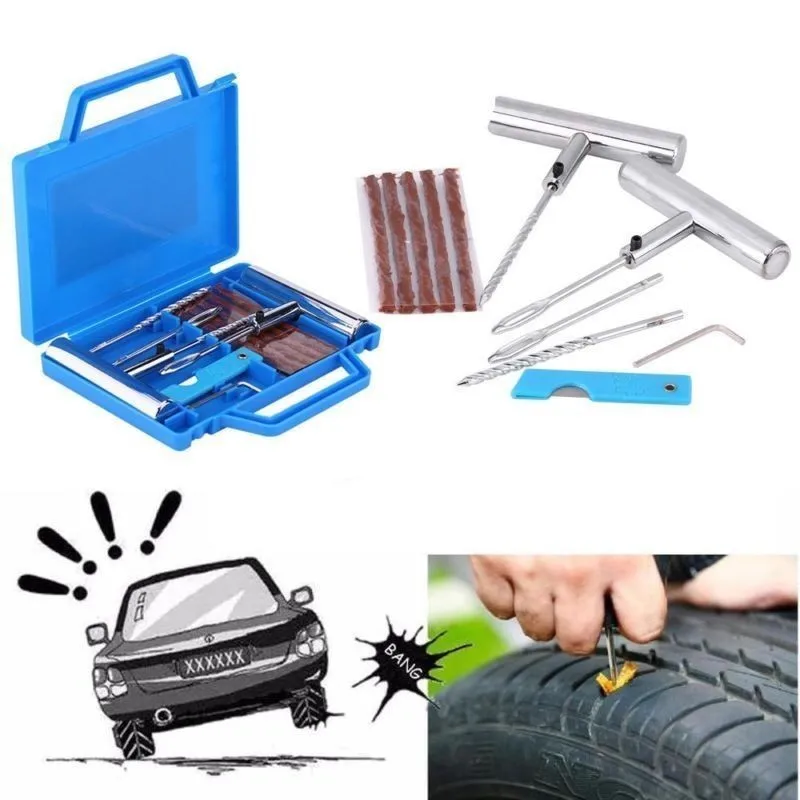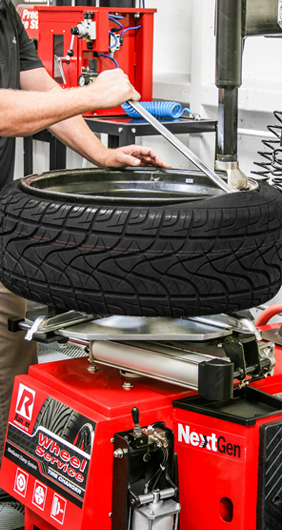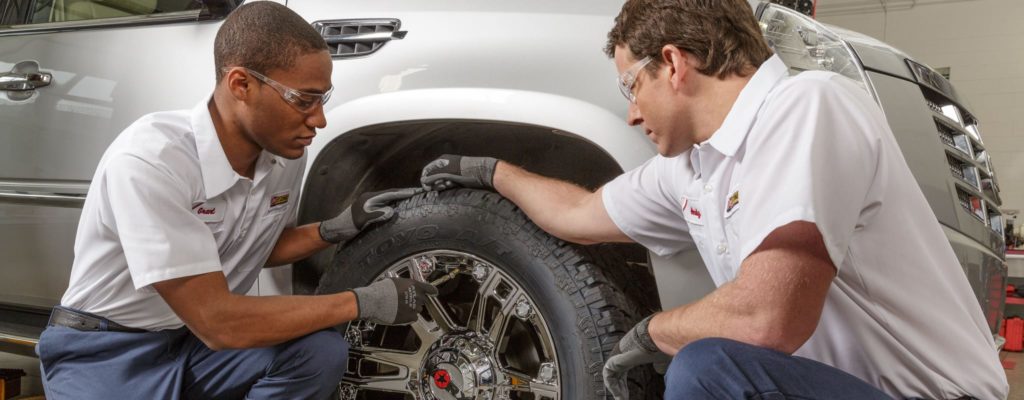Calculate Out-The-Door Price
close
× ‹
All fields are required
Submodel
Select TPMS OptionTPMSTPMS: NOTPMS: YES
WHAT IS TPMS?Enter Zip Code WHY DO WE ASK ABOUT YOUR ZIPCODE?
ZIP code is needed for local pricing.">Why?
Cross Section
Aspect Ratio
Rim Diameter
Enter Zip Code Why?
7980 S Broadway
Littleton, CO
303.515.7308
Most stores are open nights and weekends
Directions
Store Hours:
| Day(s) | Hours |
|---|---|
| MON-FRI: | 7:00am-7:00pm |
| SAT: | 7:00am-6:00pm |
| SUN: | 9:00am-5:00pm |
| CHRISTMAS EVE: | 7:00am-4:00pm |
| CHRISTMAS DAY: | Closed |
Store Details Change Store Find a Store
Schedule An AppointmentLearn more about Oil Changes
7980 S Broadway
Littleton, CO
303. 515.7308
515.7308
Most stores are open nights and weekends
Directions
Store Hours:
| Day(s) | Hours |
|---|---|
| MON-FRI: | 7:00am-7:00pm |
| SAT: | 7:00am-6:00pm |
| SUN: | 9:00am-5:00pm |
| CHRISTMAS EVE: | 7:00am-4:00pm |
| CHRISTMAS DAY: | Closed |
Store Details Change Store Find a Store
Schedule An AppointmentLearn more about Brake Service
All fields are required
Engine
Enter Zip Code Why?
All fields are required
Submodel
Enter Zip Code Why?
FIRESTONE HAS BEEN THE NATION'S LEADING TIRE PROVIDER FOR MORE THAN A CENTURY.
It's a tough road out there, and your tires bear the brunt of potholes, broken glass, nails, screws, and anything else that can puncture a tire. Firestone Complete Auto Care's flat tire repair services are the best in the business. We've been repairing tires since 1926, and we take pride in repairing America's tires. When tire damage strikes, come to Firestone Complete Auto Care–the tire repair shop you can trust.
If you suspect something is wrong with your vehicle's tires, don't hesitate to come into a Firestone Complete Auto Care near you. If your Tire Pressure Monitoring System (TPMS) light is on, you've hit something on the road, your tire is losing air, or maybe something just doesn't feel quite right, bring it in. One of our expert technicians will take a look and tell you if you need to repair or replace your tires.
Driving on a damaged tire can lead to additional (and more costly) rim damage and repairs, so it's best to have your tires examined at the first sign of trouble. The solution might be as simple as needing one of our patch plugs if the tire puncture is addressed early on. In other cases, a leaking valve stem or valve core may need to be replaced with a new one or the TPMS sensor needs to be reprogrammed or replaced. Visit your nearest Firestone Complete Auto Care, and we'll take care of you and your vehicle tire repairs.
The solution might be as simple as needing one of our patch plugs if the tire puncture is addressed early on. In other cases, a leaking valve stem or valve core may need to be replaced with a new one or the TPMS sensor needs to be reprogrammed or replaced. Visit your nearest Firestone Complete Auto Care, and we'll take care of you and your vehicle tire repairs.
Schedule An appointment
Tire Repair & Patching/Plug
If your tires still have life left in their tread and are not over 10 years old, Firestone Complete Auto Care maybe be able repair or patch & plug them to get you back on the road quickly. Keep in mind not all tire damage can be patched if the puncture is too big.
Tire Replacement
Over time, the tread on your tires wears down, leading to compromised traction on the road and potentially dangerous driving conditions. Tires generally need to be replaced every 25,000 to 50,000 miles, depending on vehicle manufacturer recommendations and driving habits.
Tire Rotations & Balancing
When you have your tires rotated, you help increase the life of your tires by helping reduce uneven wear. Most vehicle manufacturers recommend a tire rotation about every 5,000 miles or at the manufacturer-recommended mileage. Tire balancing helps ensure weight is evenly distributed around your tires. It's necessary about every 5,000 miles or as recommended by your manufacturer. Balancing can lead to a smoother ride, less tire wear, and reduced strain on the drivetrain. When you think tire balancing, think safe, smooth, and efficient driving.
Wheel Alignments
It's best to have your alignment checked every 6,000 miles or twice a year. Even one misaligned wheel can cause the steering wheel to be off center and can lead to premature wear and tear on your vehicle over time. Keeping everything properly aligned ensures a smoother ride for you and a longer life for your tires.
Flat Repair
A flat or leaking tire can leave you stranded on the side of the road or lead to a situation where you lose control while driving. Take care of flat or leaking tires as early as possible to extend tire lifespan and ensure your tire doesn't leave you stranded.
Schedule An Appointment
All fields are required
Engine
Zip Code Entry Why?
Flat tires rarely happen at ideal times. Let Firestone Complete Auto Care help you with these answers to frequently asked flat tire questions.
To ensure a safe drive that doesn’t damage your rims or create more expensive repairs, change your flat tire with your spare tire before coming into your local Firestone Complete Auto Care center for flat tire repair.
It’s tempting to replace just the tire that's damaged, but replacing one tire at a time can present challenges down the road since the one tire will have a different tread depth and thus different accelerating, braking, and cornering abilities than all of the others.
Few things are more inconvenient than a flat tire —except back-to-back flat tires. Learn the reasons why you keep getting flat tires and what you can do to help prevent flat tires from deflating your spirits!
If your vehicle hits a pothole in the road, you may experience steering and suspension system misalignment and/or damage, tire punctures, bent rims, and more. When your vehicle experiences a sudden jolt from a pothole run-in, timely inspection is highly recommended.
Pothole damage may not be obvious right away, but it can wreak havoc on your entire car if it’s not addressed quickly and fixed right the first time. If you've had a recent run-in with a pothole, head to your local Firestone Complete Auto Care for a Complete Vehicle Inspection to check for any issues.
If you've had a recent run-in with a pothole, head to your local Firestone Complete Auto Care for a Complete Vehicle Inspection to check for any issues.
A tire plug is a quick fix for a tire that's leaking air from a nail or similar object that has punctured the tire. A tire plug fills the hole of the tire but is not reliable without a tire patch and not recommended to use alone. A patch is applied to the inside of the tire to further prevent an air leak and helps hold the plug in place. This allows a tire with ample useful life left in it to hold air reliably and keep you on the road for longer.
Run flat tires allow you to drive on a flat tire for a limited time with lesser risk than non-run flat tires. A Run Flat tire could be repaired if a nail or object is caught before tire damage occurs. However, if the tire is permanently damaged, it is required to replace a Run Flat tire with a new one.
The Tire Pressure Monitoring System light will illuminate if tire pressure is too low or part of the TPMS system has malfunctioned. Important TPMS warning light behavior:
Looking for the closest flat tire repair shop? Come to Firestone Complete Auto Care for a tire plug & patch or other tire repair service today!
Read More
Regular tire rotations can help prevent uneven tread wear and help your tires last longer. Schedule a tire rotation appointment at a Firestone Complete Auto Care near you today.
Schedule a tire rotation appointment at a Firestone Complete Auto Care near you today.
Read More
Knowing when to replace tires is as easy as measuring tire tread depth. Learn more about this important measurement and visit Firestone Complete Auto Care!
Read More
Tires
Nov 14, 2022
Need a fresh set of winter tires but don’t know what to look for? We have you covered. Read on to learn about tread patterns, tire compounds, ratings, and more!
Read More
Tires
Sep 19, 2022
What is backspacing in wheels? What about offset? Are they the same or completely separate things? Firestone has the answers you're looking for. Learn more.
Learn more.
Read More
Tires
Aug 19, 2022
What are the symptoms of unbalanced tires, and do yours need balancing? Learn everything you need to know about this often-overlooked aspect of car maintenance.
Read More
LOAD 3 MORE
SHOWING 6 OF 12
View More Articles
{{storeNumber}}
{{storeName}}
{{link-icon "Call Us" mobileCallLink null "call-cta"}} {{link-icon "Directions" directions "_blank" "directions-cta"}}
{{address}}
{{city}}, {{state}} {{zip}}
{{#if activeFlag}} {{#ifCond mystore "or" myPreferredStore}} {{#ifCond storeType 'eq' "TPL"}}
*Call store for appointment {{phone}}
{{else}} {{#if onlineAppointmentActiveFlag }}
{{#if myPreferredStore}}
{{else}}
*Call store for appointment {{phone}}
{{/if}} {{/ifCond}} {{else}} {{#ifCond storeType 'eq' "TPL"}}
*Call store for appointment {{phone}}
{{else}}
Schedule Appointment {{#if onlineAppointmentActiveFlag}} {{else}}
*Call store for appointment {{phone}}
{{/if}}
{{/ifCond}} {{/ifCond}} {{else}}
*Temporarily Closed Due To: {{temporarilyClosedReason}}
{{/if}} {{#if isMilitaryStore}}
*This location is on an active US military base. You may need military ID to access the location.
You may need military ID to access the location.
{{/if}}
{{#ifCond count 'eq' "3"}} Show More Stores {{/ifCond}}
“They told me that it can’t be repaired”, We have all heard that story from customers coming in after visiting another tire shop. Whether you hit a curb that popped your tire or it has a foreign object stuck in the tread. In our experience of flat tire repair, we have found that most can be repaired. Not only do we repair tires that others say cannot be repaired, we do it the right way. We take pride in patching your tire properly so the repair will last, no plugs used here.
In the occasions that the tire can not be repaired, and you have an all wheel drive or 4 wheel drive, we have an amazing selection of used tires to match tread depth.
I have a flat tire, now what?
Plug or patch my tires? – At Tire King we patch tires and do not plug tires. The reasons we do not plug is:

COLD PATCH- The tire taken off the rim and the nail or foreign object is removed from the tire. The tire is then inspected. Once the problem area is confirmed, the area inside the tire is buffed down to ensure the solution adheres to the patch and tire properly. When you purchase Used or New tires through Tire King you can always count on this service being FREE FOR THE LIFE OF THE TIRES.
HOT PATCH - A Process using virgin Rubber to fill a hole or cavity of an injury done by a foreign object in a tire. Once the rubber is laid out properly a hot iron with heated clamps hold pressure on the wound for about 20 minutes to ensure a solid patch.
Once the rubber is laid out properly a hot iron with heated clamps hold pressure on the wound for about 20 minutes to ensure a solid patch.
Can you repair a hole in my tire sidewall?
April 26, 2022, 12:29
As you know, one of the ways to connect a pipeline line to each other is a flange connection. Many people are familiar with the concept of a flange, a blind flange and a blind flange. And what are the differences between them? What do ATK plugs and blind flanges have in common? We'll tell you in the article.
Flange plug serves to kill the flow of the medium in the pipeline and is installed at the end sections of the line. It has a second name in the colloquial environment - blind flange . Plugs are used in high pressure applications. In their design they do not have a central passage. Flange plugs are manufactured with diameter from 10 to 1200 mm and pressure from 6 to 160 kgf/cm² .
Like a conventional flange, the blind flange has mounting holes around the perimeter, and the sealing surface can be made in five versions: with a raised face and a connecting shoulder (angle of 45 and 90 degrees), a cavity, a spike and an annular surface of the mirror for an oval gasket.
Plugs are joined with flanges, forming a reliable flange connection. Often, a blind flange is inserted into the pipeline when repairs are needed down the line. This allows downstream flanges to be disconnected without fear of loss of the internal medium. Often end caps are used when adding another line to an existing pipeline or when adding new equipment. The plug is indispensable for disconnecting the line when it is no longer needed. Without a blind flange, it would be difficult to carry out maintenance or repair of the pipeline. A blind flange is a much more economical way to seal a pipe. Read also about the comparison of flanged plugs with rotary plugs →
Often end caps are used when adding another line to an existing pipeline or when adding new equipment. The plug is indispensable for disconnecting the line when it is no longer needed. Without a blind flange, it would be difficult to carry out maintenance or repair of the pipeline. A blind flange is a much more economical way to seal a pipe. Read also about the comparison of flanged plugs with rotary plugs →
Plug version ATK 24.200.02-90
 M (9) with groove for PTFE gasket
M (9) with groove for PTFE gasket The history of standards for plugs dates back to 1954, when GOST 6973-54 was adopted, later it was replaced by GOST 12836-67. Since 1990, the standard has been revised and all innovations have been included in the album of standard designs (ATK) 24.200.02-90. The plugs have 5 designs that can withstand temperature fluctuations from -70 to 600 degrees . The sealing surface is joined with flanges in accordance with GOST 33259-15. The regulatory document contains convenient tables with a size range, conveniently divided into pressure indicators for each design.
Flat manhole cover plugs according to OST 26. 2008-83 look very similar to flange plugs. But it all ends with the outward resemblance. Firstly, the diameter of the covers starts from 400 mm, and the nominal pressure range is from 0.1 to 16 MPa , where the second version of the “thorn” type goes from 0.3 MPa . Such round plugs also fit with flanges, but are intended for flanges of vessels and apparatuses in accordance with GOST 28759.2. They are not used as an individual part, they only come with flat manhole covers according to OST ( OST 26-2002, OST 26-2005, OST 26-2007 ). They act as structural elements of the hatch.
2008-83 look very similar to flange plugs. But it all ends with the outward resemblance. Firstly, the diameter of the covers starts from 400 mm, and the nominal pressure range is from 0.1 to 16 MPa , where the second version of the “thorn” type goes from 0.3 MPa . Such round plugs also fit with flanges, but are intended for flanges of vessels and apparatuses in accordance with GOST 28759.2. They are not used as an individual part, they only come with flat manhole covers according to OST ( OST 26-2002, OST 26-2005, OST 26-2007 ). They act as structural elements of the hatch.
As a result, when it comes to the standard for plugs, the ATK 24.200-02 standard prevails on the territory of the Russian Federation.
American ASME/ANSI standards are more mature, detailed and popular in the international industry. ASME B 16.5 has its origins in 1920 with the latest revision dated 2003. Blind flange is part of the ASME B 16.5 general flange code and is called Blind flange . You can find the second term blank flange and the abbreviation BL . Plugs are available from 1/2" to 24" . When translated into a more familiar measuring system, you can see that American blind flanges are produced with a diameter of up to 600 mm. For comparison, ATK plugs are designed up to 1200 mm. Conditional pressure is measured in classes and reaches a parameter of 2500 , which, when recalculated in MPa, is 41.2.
Blind flange is part of the ASME B 16.5 general flange code and is called Blind flange . You can find the second term blank flange and the abbreviation BL . Plugs are available from 1/2" to 24" . When translated into a more familiar measuring system, you can see that American blind flanges are produced with a diameter of up to 600 mm. For comparison, ATK plugs are designed up to 1200 mm. Conditional pressure is measured in classes and reaches a parameter of 2500 , which, when recalculated in MPa, is 41.2.
The European standard EN 1092 also contains a blind plug as one of the flange types - Type 5, Blind flange . The standard has replaced DIN 2527 . EN flanges are designated pressure class PN from PN 2.5 to PN 400 and sizes DN 10 to DN 4000 . DN is not an abbreviation for DIN, but in metric units is the same as the diameter for ASME pipes and flanges.
The notable difference between the two plugs is in the part thickness requirements, EN will be thinner than ASME.
Let's compare the technical parameters between the three standards ATK, ASME and DIN.
| Standard | Diameter | Pressure |
|---|---|---|
| ATK 24.200.02-90 | from 10 to 1200 mm | from 0.6 to 16 MPa |
| ASME B 16.5 | NPS 1/2" to 24" | Class 150 - 2500 |
| DIN EN 1092 | from DN 10 to DN 4000 | from PN 2.5 to PN 400 |
Use this article to convert units of measurement.
➤ Output
As we found out, the terms “flange plug” and “blind flange” in the Russian field are synonymous and represent a single round part of the pipeline without a central passage, according to ATK 24. 200-02-90. Whereas international experience ascribes a flange plug to a common flange standard. The part gets the name “Blind (/ Blank) Flange” , which literally means “blind flange”. In the American ASME standard, the plug becomes the sixth type, along with collar and flat flanges, and in the DIN standard it acts as the fifth type of flange. As a result, the flanged plug has a separate standard in Russia, is included in the general list of flange types in international standards and has a second name - a blind flange.
200-02-90. Whereas international experience ascribes a flange plug to a common flange standard. The part gets the name “Blind (/ Blank) Flange” , which literally means “blind flange”. In the American ASME standard, the plug becomes the sixth type, along with collar and flat flanges, and in the DIN standard it acts as the fifth type of flange. As a result, the flanged plug has a separate standard in Russia, is included in the general list of flange types in international standards and has a second name - a blind flange.
➤ Helpful Reading:
To order a flange plug, send a request by e-mail or call the sales department managers.
➥ 8 (499) 673-38-38 Moscow
➥ 8 (343) 384-38-38 Yekaterinburg
➥ 8 (812) 328-38-38 St. Petersburg
Petersburg
➥ 8 (800) 555-38-83 Free of charge within the Russian Federation
— Oskolkova Anastasia, content manager, ONIX
READ ALSO
Comparison of roughness tolerances for flange designs of two standards: GOST 33259-15 and ASME B 16.5 07.12.2022
Comparison of steel 10Kh17N13M2T and 316Ti. Mechanical Properties and Benefits of Corrosion Resistant Alloy 02.11.2022
How are steel grades deciphered? Classification of steel grades 10/19/2022
Deciphering the marking of pipeline parts, how to figure it out? Detailed guide 09/21/2022
Plastic bottles are the traditional material for bird feeders. Sufficiently strong and durable, easily processed, transparent. It's practically free. There are a lot of homemade designs, each with its own advantages and disadvantages. The tricky part of making a bottle feeder is to organize a way to gradually bring the food to a platform from which the birds can peck. On the one hand, there should not be too much sleep at once, on the other hand, the feed supply holes should not jam, which is especially important in wet weather. And I also want the production and reloading of the feeder to not take much time. Having been engaged in winter feeding of birds for a long time, I was looking for a reliable and universal solution that combines the above requirements, at the same time a budget solution that could be hung in parks and forests. And it looks like I found it.
There are a lot of homemade designs, each with its own advantages and disadvantages. The tricky part of making a bottle feeder is to organize a way to gradually bring the food to a platform from which the birds can peck. On the one hand, there should not be too much sleep at once, on the other hand, the feed supply holes should not jam, which is especially important in wet weather. And I also want the production and reloading of the feeder to not take much time. Having been engaged in winter feeding of birds for a long time, I was looking for a reliable and universal solution that combines the above requirements, at the same time a budget solution that could be hung in parks and forests. And it looks like I found it.
Feeding area designed for small birds
Feeder is an attachment for a standard (0.3 - 2 liters) plastic bottle, in which the feeding area is combined with a dispenser. Also included is a hanging bracket. Packaging is also a label on which the manufacturer managed to place comprehensive information in a colorful and readable way.
The design is designed for small birds - they are the ones who especially need to be fed "constantly, but a little bit" in winter. First of all, the feeder is mastered by various tits (highways, blue tit, puffy, ...) - one of the most popular and, at the same time, the most useful birds that fly to people in winter for help. But, for example, food is not available for pigeons, including because of the suspended structure. In fact, two suspension holes are all you have to do with the bottle to launch the feeder. Simple and affordable for all bird lovers.
Please note that the suspension bracket is designed for the thickest 2 liter bottles . To a one and a half liter pen with some tension, but can be adapted. But for smaller bottles, the handle will have to be made independently. I used thick wire.
Homemade handle made from a piece of wire
As feed, you can use both specialized mixtures and any sufficiently small grain feed. When buying seeds pay attention to the size - too large can jam the dispenser. With the right size of feed from any bottle of , the contents are poured out completely , to the last grain. This is one of the important advantages of the design.
When buying seeds pay attention to the size - too large can jam the dispenser. With the right size of feed from any bottle of , the contents are poured out completely , to the last grain. This is one of the important advantages of the design.
The feeder is loaded through the bottom that can be easily twisted out. When pouring feed, close the side openings of the dispenser or use a funnel.
Screw plug in the bottom
Important: if the weather is changeable and there are thaws with rains, drill some drainage holes to prevent the feed from getting stuck.
Although the nozzle itself looks quite elegant, there is little aesthetics in plastic bottles. If you want something prettier on the window or near the house, it is better to pay attention, for example, to the Ornito feeder, a review of which has already been left here. But when during the winter you hang and maintain a dozen feeders in places of hiking and skiing, something simpler is enough.